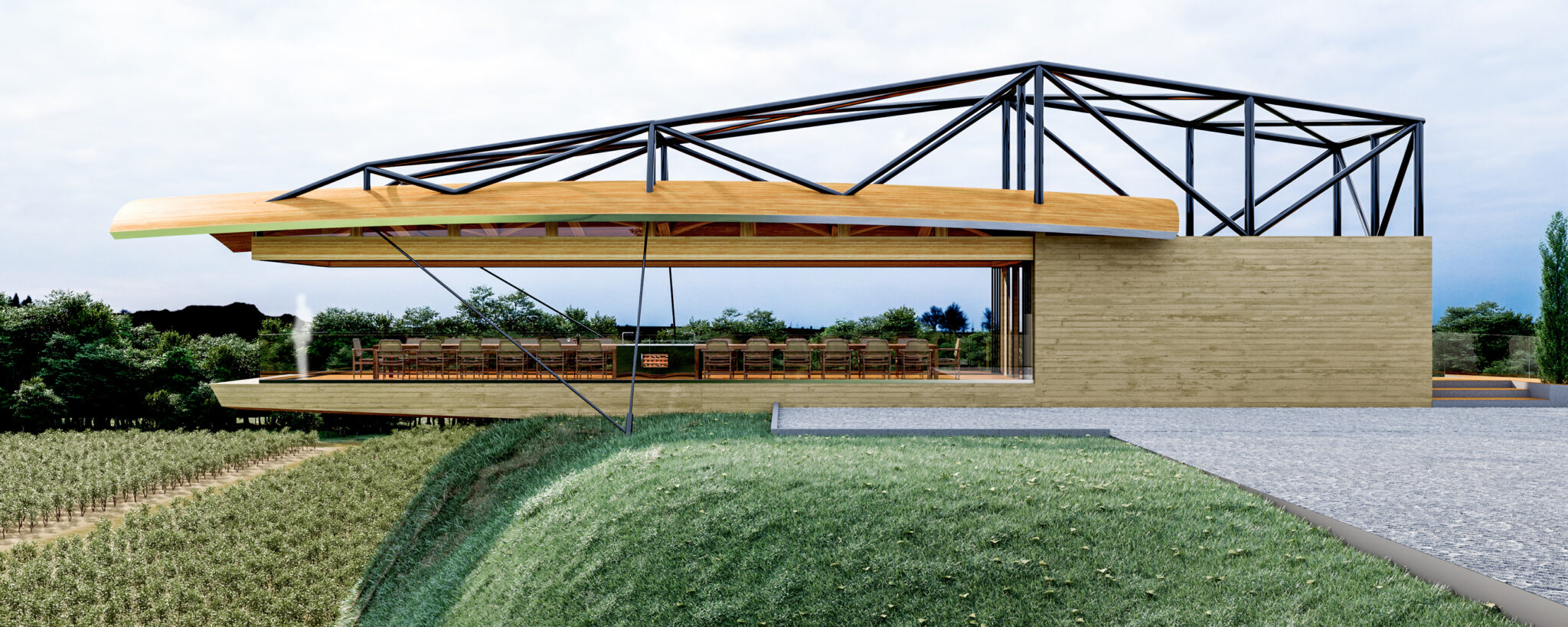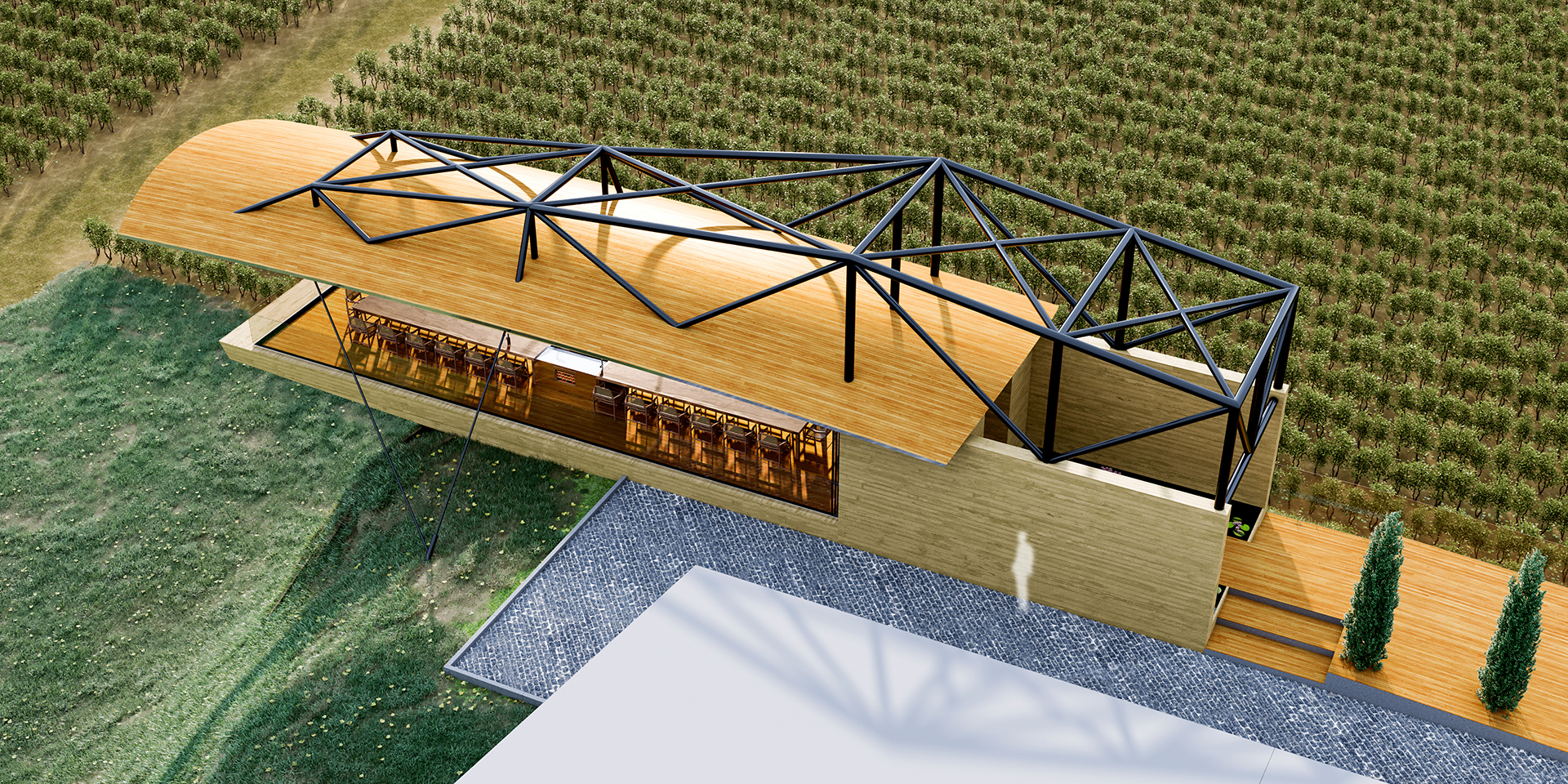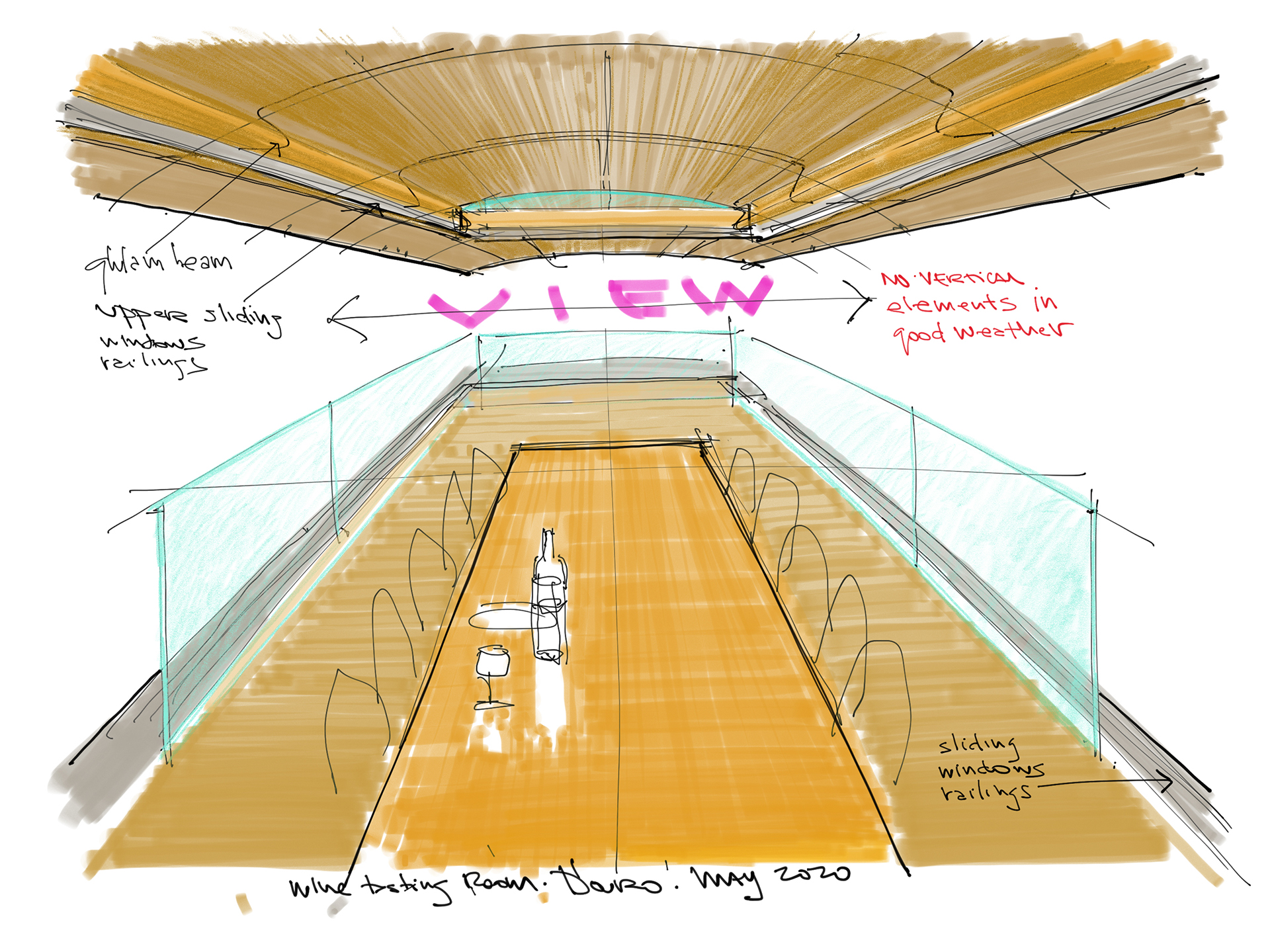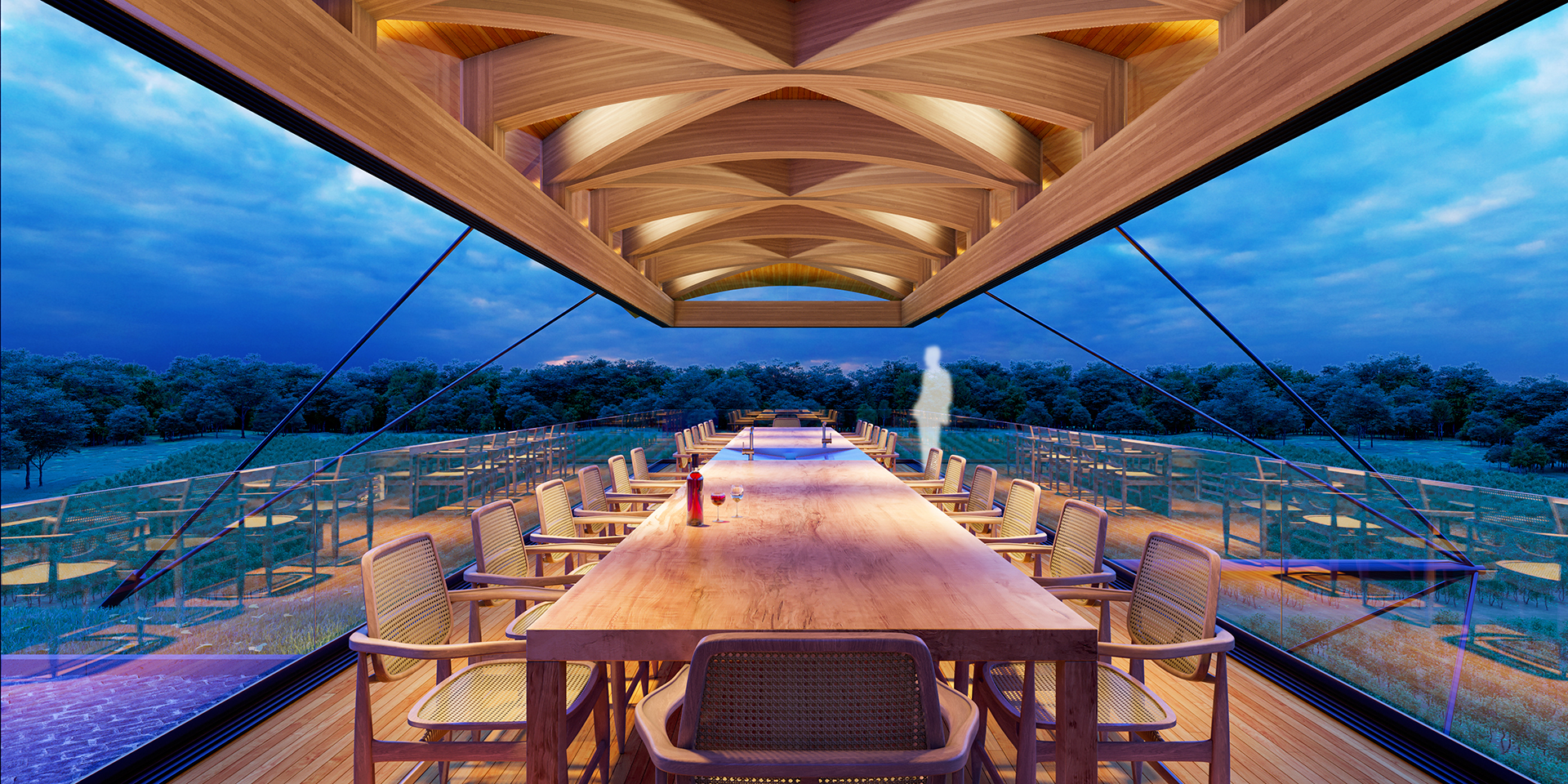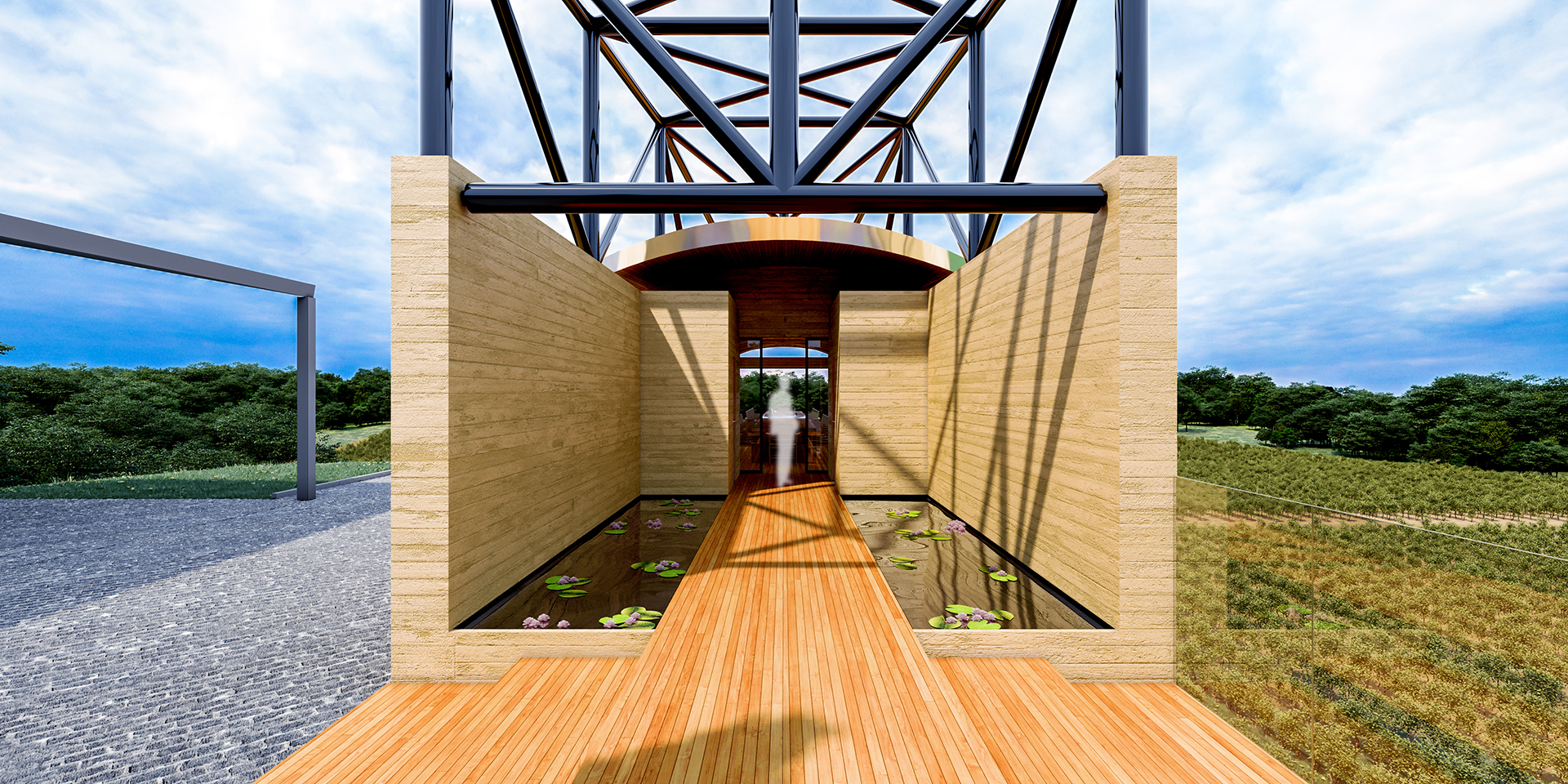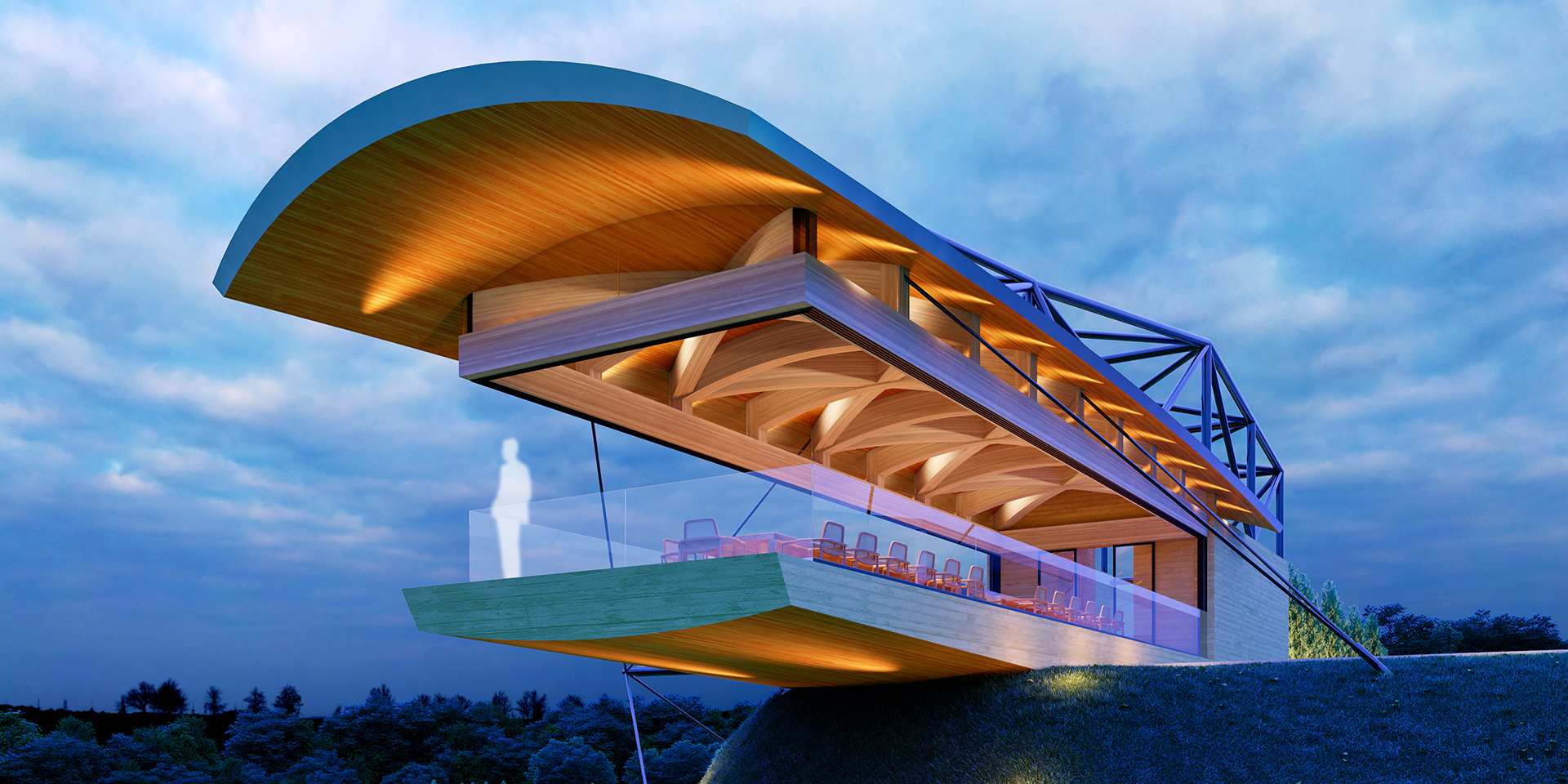This wine tasting room is a private Project in southern Brazil.
There is a correlation between architecture and wine making. In this building we taste what the earth provides. This building emerges solidly from the same earth and elevates itself. To watch the genesis of the winemaking process from above, from the air.
It is a suspended flying terrace. Wine rests in wood vessels, wood barrels before the bottle, the glass, the body. This building is a vessel full of people discovering wine.
The building was also positioned in such a way that the first 9 meters of the building would fly over the existing plateau’s edge, making the experience of tasting wine a lot more interesting. The idea is to make the room act, weather allowing,as a flying terrace free of any vertical elements, and thus, view disturbance.
